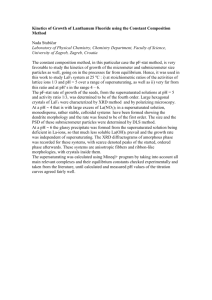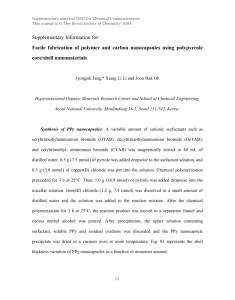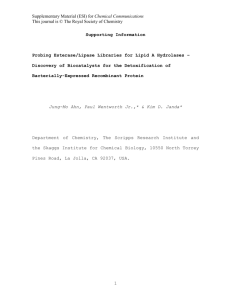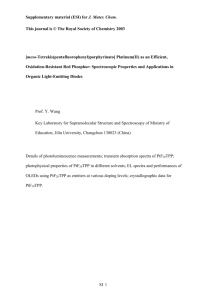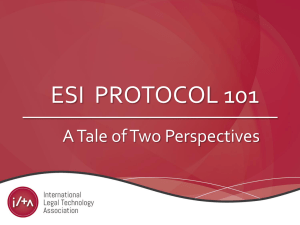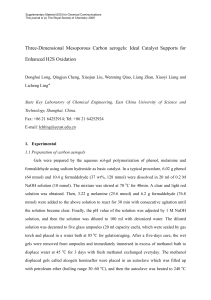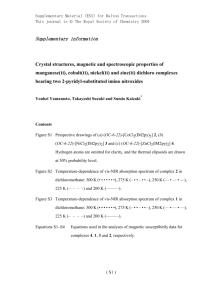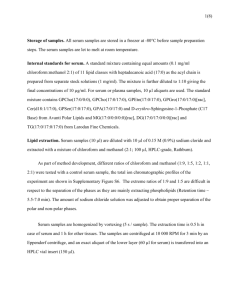Supplementary Information - Royal Society of Chemistry
advertisement
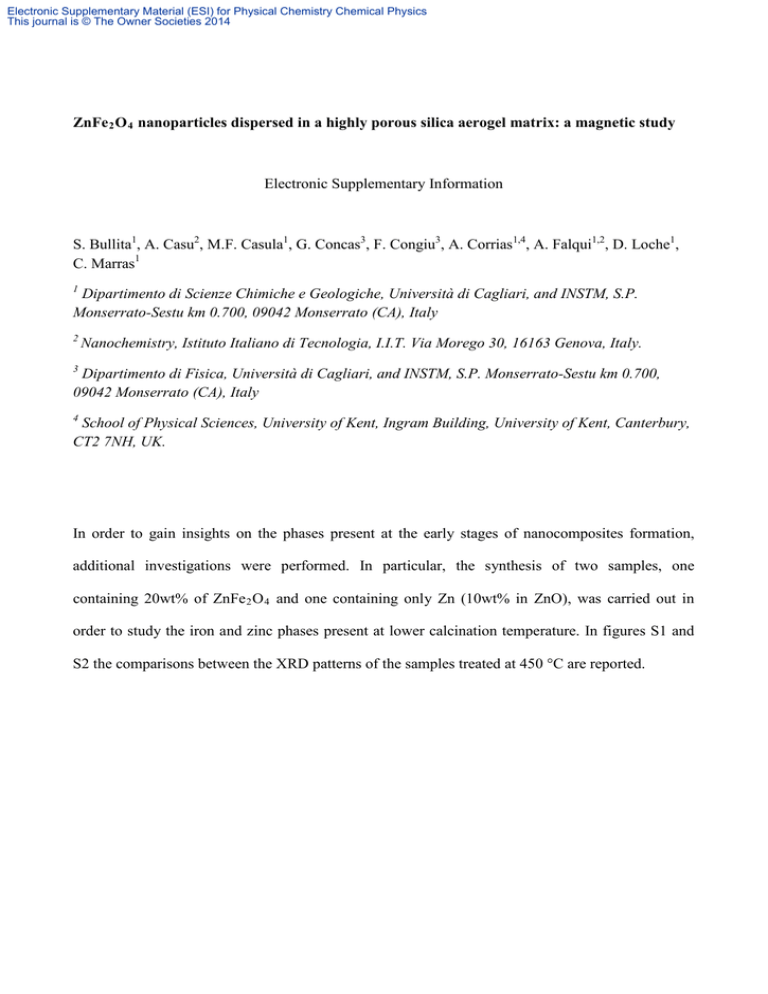
Electronic Supplementary Material (ESI) for Physical Chemistry Chemical Physics This journal is © The Owner Societies 2014 ZnFe 2 O 4 nanoparticles dispersed in a highly porous silica aerogel matrix: a magnetic study Electronic Supplementary Information S. Bullita1, A. Casu2, M.F. Casula1, G. Concas3, F. Congiu3, A. Corrias1,4, A. Falqui1,2, D. Loche1, C. Marras1 1 Dipartimento di Scienze Chimiche e Geologiche, Università di Cagliari, and INSTM, S.P. Monserrato-Sestu km 0.700, 09042 Monserrato (CA), Italy 2 Nanochemistry, Istituto Italiano di Tecnologia, I.I.T. Via Morego 30, 16163 Genova, Italy. 3 Dipartimento di Fisica, Università di Cagliari, and INSTM, S.P. Monserrato-Sestu km 0.700, 09042 Monserrato (CA), Italy 4 School of Physical Sciences, University of Kent, Ingram Building, University of Kent, Canterbury, CT2 7NH, UK. In order to gain insights on the phases present at the early stages of nanocomposites formation, additional investigations were performed. In particular, the synthesis of two samples, one containing 20wt% of ZnFe 2 O 4 and one containing only Zn (10wt% in ZnO), was carried out in order to study the iron and zinc phases present at lower calcination temperature. In figures S1 and S2 the comparisons between the XRD patterns of the samples treated at 450 °C are reported. Intensity (a.u.) Electronic Supplementary Material (ESI) for Physical Chemistry Chemical Physics This journal is © The Owner Societies 2014 (b) (a) 10 20 30 40 50 60 70 80 90 2θ (degrees) Fig. S1. XRD patterns of the 10wt% ZnFe 2 O 4 -SiO 2 (a) and 20wt% ZnFe 2 O 4 -SiO 2 nanocomposite aerogels treated at 450 °C. Intensity (a.u.) Electronic Supplementary Material (ESI) for Physical Chemistry Chemical Physics This journal is © The Owner Societies 2014 (b) (a) 10 20 30 40 50 60 70 80 90 2θ (degrees) Fig. S2. XRD patterns of the 10wt% ZnO-SiO 2 (a) and 10wt% ZnFe 2 O 4 -SiO 2 (b) nanocomposite aerogels treated at 450 °C. The XRD patterns of the nanocomposites treated at 450 °C are quite similar; however, in the 20wt% sample the peaks are slightly more evident. In particular, the pattern of the sample at 20wt% confirms1,2 that the iron is in form of ferrihydrite.3 On the other hand, there is no evidence of peaks due to any Zn phase at this calcination temperature in any of the samples. 1. M.F. Casula, D. Loche, S. Marras, G. Paschina, A. Corrias, Langmuir, 2007, 23, 3509. 2. D. Loche, M. F. Casula, A. Falqui, S. Marras, A. Corrias, J. Nanosci. Nanotech. 2010, 10, 1008. 3. PDF-2 Card n. 29-712


